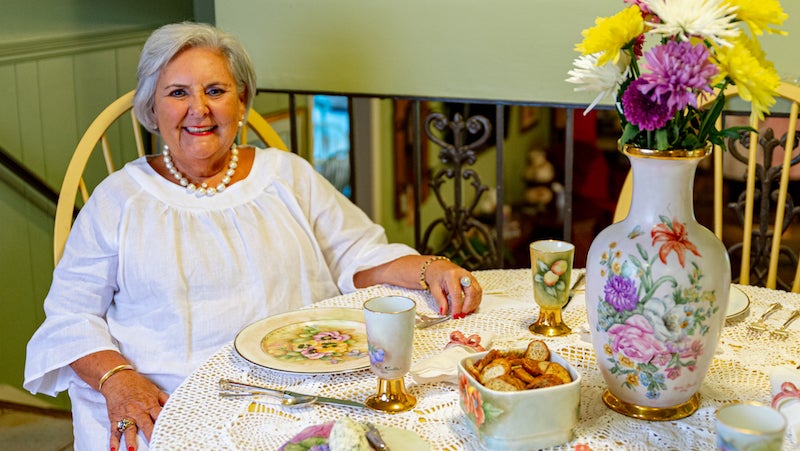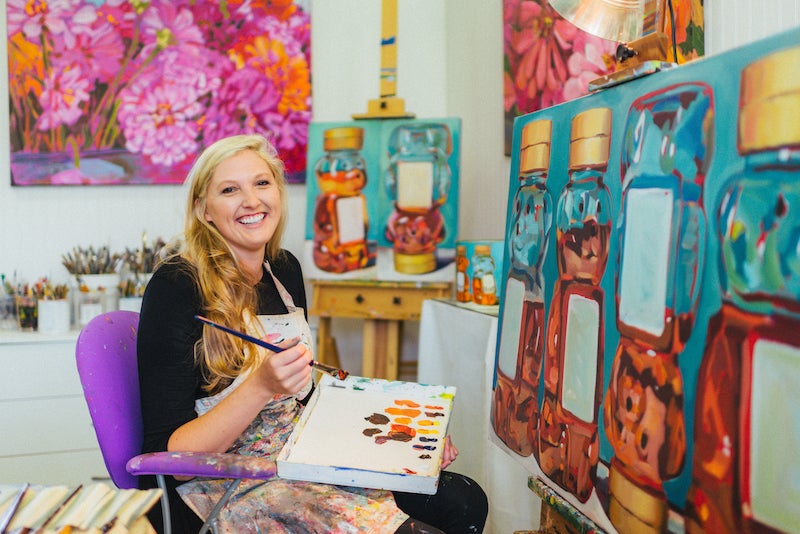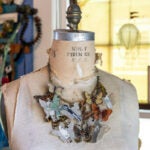By Lauren H. Dowdle
Photos by Evelyn Adams
What began as a hobby that sometimes got Karen Libecap scolded as a child has led to a full-time passion, awards and a stunning collection of tiny works of art.
“When I was little, I would always draw really small and write my name really small—and get in trouble in school for it,” Karen says.
That interest in tiny things began when she was a child and has only grown since. Her grandfather owned a print shop where her father worked after his day job as an engineer. The typesetting there was done by hand compositing, and each character or symbol was a small piece of metal.
Karen’s job at the shop was to file the tiny pieces when they were finished with them—partly because she was the only one who could see them well enough. In between filing, she would gather leftover scraps of paper to write stories and draw on.
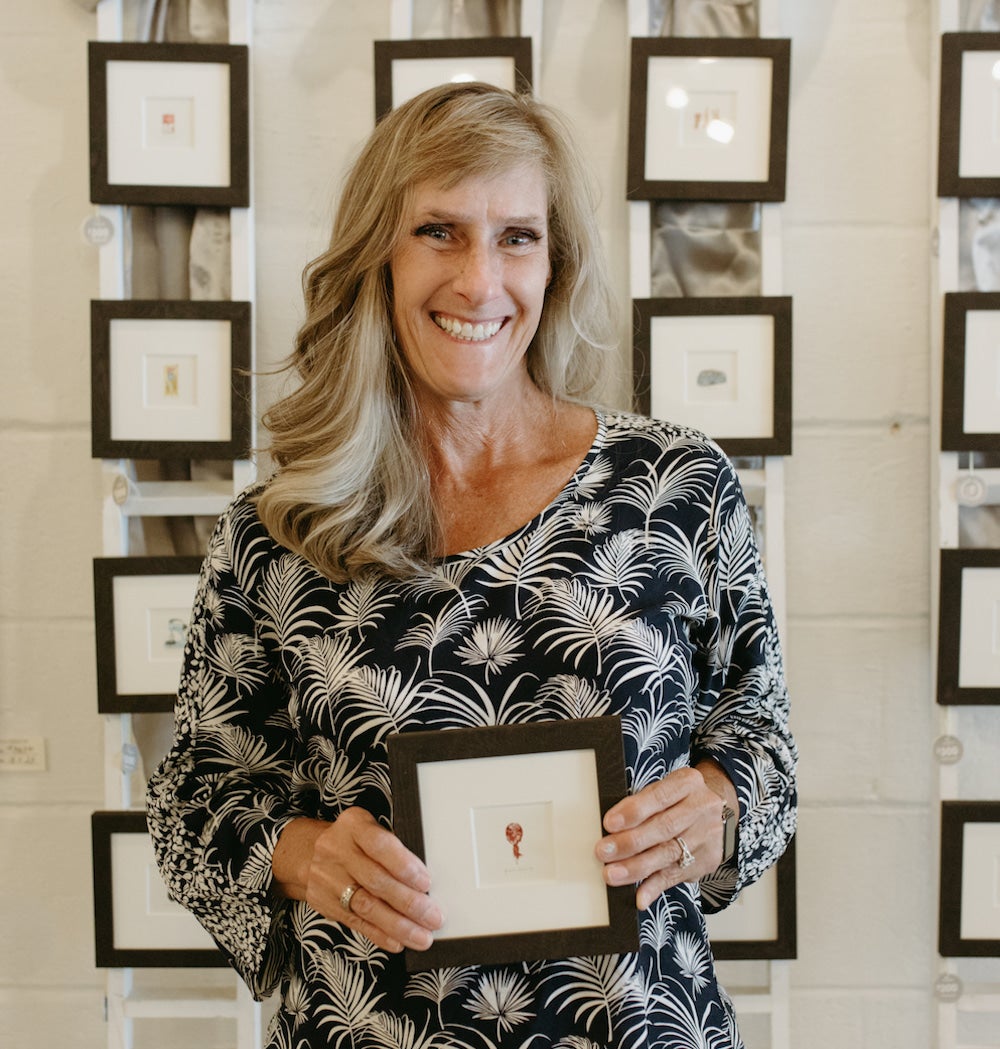
With those, she began creating her first collection of tiny art—and her love for all things small was born. But her passion for art had already been ingrained in her.
“My mom was an artist—she painted, knitted, sculpted, everything—so I grew up around that,” she says. “She was always encouraging me to follow my passion.”
After high school, Karen planned to go into illustration but ended up earning a degree in graphic design from Kent State University. But after college, getting married, having three children and working as an art director in several large cities, she set aside her paint and drifted away from art.
That changed after she got divorced and reconnected with her high school sweetheart in 2009. He asked her why she had stopped drawing, and soon after, she decided to start painting again. When she first started back, she focused on traditional-sized pieces.
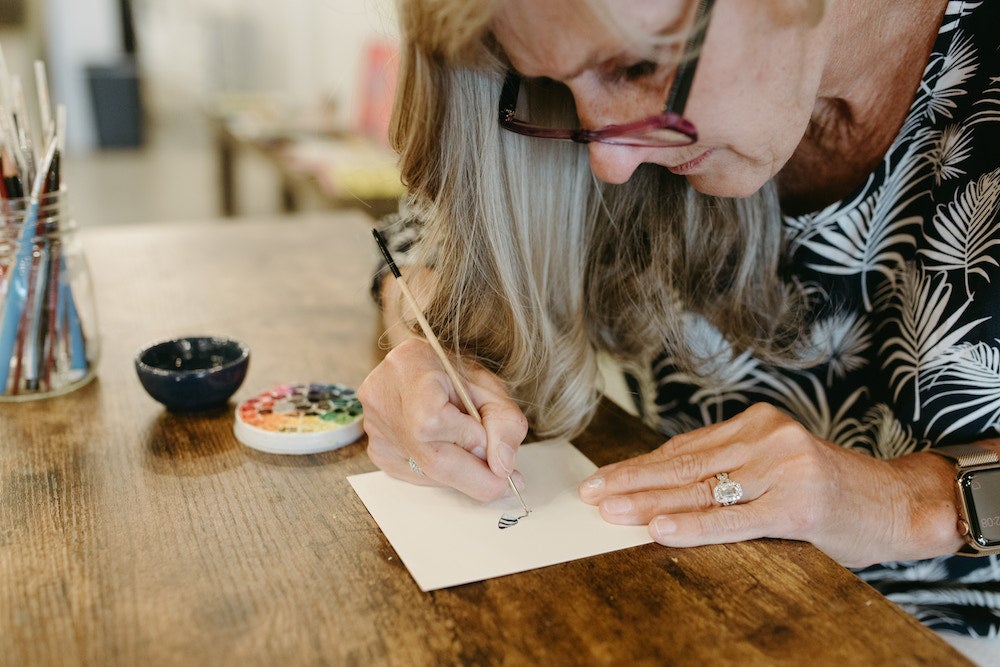
But halfway through one of those projects, she would want to move on to something else. She decided to go back to her “little” roots and create a tiny piece of art—and it worked. The miniature size held her attention and allowed her to finish many of the pieces during one sitting.
“It was a natural thing for me,” Karen says. “I can put as much detail in them as I want.”
She now uses watercolors, gouache and oils to create paintings that are 1.25-by-1.25 inches or smaller—and a very tiny brush. The process takes a great deal of patience and attention to detail, so it’s not surprising few artists create tiny paintings.
She tries to add as much detail as she can to each one, with pieces now taking her anywhere from a few hours to a couple of days to complete. “It started out like therapy,” Karen says. “I would just get lost in the painting. I had no idea it would take off like it would.”
Some of her hyper-realistic tiny paintings include a grouping of Fisher Price Little People, cheeseballs, album covers, drinks and characters. She only creates 20 prints of each painting, so once a design sells out, it’s gone. Each original piece gives her the opportunity to let her creativity run wild.

“I love that I can be quirky and random. When you look at my collection, it’s like walking inside my head,” she says. “The ones I choose to paint, I can connect with in one way or another. Maybe it’s a favorite toy or my brother’s favorite food. I pick something that connects with me.”
While she hasn’t kept any of her paintings, she did come close once. “There was one of a jar of pickles, and I just really liked how it turned out,” Karen recalls. “I’d decided if it didn’t sell at the show, I’d keep it. But then a guy came running up to my tent at the end and said, ‘Please tell me you still have the pickles,’ and he bought it.”
She didn’t truly realize how important those interactions and art shows were until the pandemic hit and cancelled them. “Because the pieces are so small, it’s hard to take a good picture of them,” she says. “They’re something you have to see in person to really appreciate.”
So, she began creating larger abstract landscapes and portraits during that time, but her true love remained with her tiny paintings. As more art shows and events began opening back up, Karen took full advantage of those opportunities.

That has also included attending art festivals, where she recently won best of show. She took home the award at the Main St. Fort Worth Arts Festival in Texas this past spring for her miniature paintings.
“I’m still in shock people like it so much. It’s relatable to a lot of people,” Karen says. “They’re affordable pieces of art that people can connect with—and they make great gifts.”
When she isn’t painting tiny artwork for shows and festivals, she also accepts commissioned projects. Her commissioned pieces include a lot of pet artwork, though she has had more unique requests—like a latte machine and defibrillator.
No matter what she’s crafting, each piece requires her to solve an equation to fit so much detail on such a small canvas. “When I paint, I look at it as a math problem—as one part is in relationship to another,” she says. “If I’m off one dot, it will change everything.”
While her canvas maybe small, the possibilities of what she can create are anything but.
“I love that I can pretty much paint whatever I want to,” Karen says. “It’s unlimited.”
To view or purchase her pieces, visit Karenlibecap.com. Her prints can also be found locally at Thomas Andrew Art in Homewood and The Grand Bohemian Art Gallery in Mountain Brook.

Meet the Artist
As more events start back following the pandemic, Karen says she’s enjoyed participating in art shows and tries to do as many as she can.
“I didn’t realize before doing the shows how important it was to meet the artist,” she says. “I’m not a fan of being front and center, but doing the shows helped make me more personable and put myself out there.”
Residents can see Karen and her work at the Bluff Park Art Show on Oct. 1 from 9 a.m. to 5 p.m. at the Hoover Metropolitan Complex. She will also be at the Kentuck Festival of the Arts from Oct. 15-16 at Kentuck Park in Northport, Alabama.
“I’ve met so many people and heard positive responses that have been helpful and keep me doing what I’m doing,” she says.



